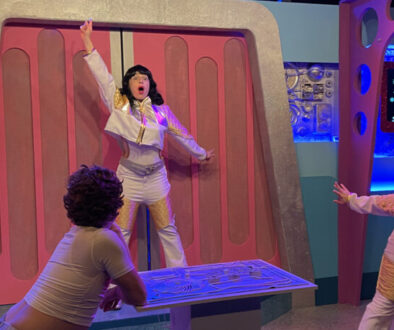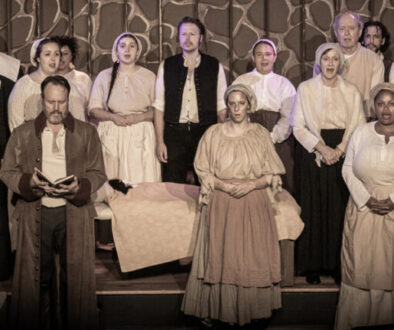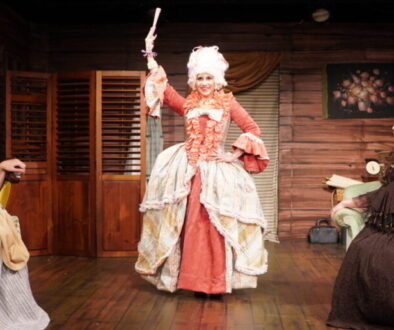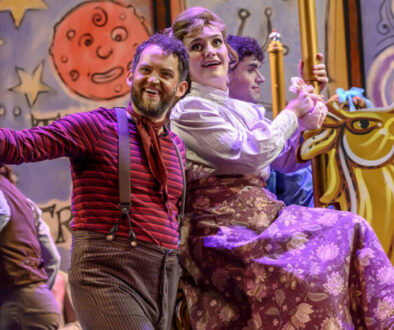By EDWARD RUBIN
Edgar Rice Burroughs’ fictional character Tarzan was a cultural sensation when it first appeared on the scene more than a century ago in 1912. Published first in serial form, the popular character leaped from magazines into “Tarzan of the Apes,” the first of many popular novels.

A big hit with the public, the Chicago-born Burroughs (1875-1950) went on to write an additional 25 Tarzan sequels over the next half-century. On a frantically productive, life-long roll, he also penned some 50 science fiction and Western novels. When he died, Burroughs was believed to have been the writer who had made the most money from films, earning over $2 million in royalties from 27 Tarzan pictures.
Throughout the past century, the character of Tarzan, has starred in countless movies, both live and animated, on radio and television, in comic strips, comic books, video games, and theaters around the world. Numerous writers have added their own plot variations to Burroughs’ “noble savage,” some authorized by the Burroughs estate and others not.
Tarzan and his alter ego Greystoke’s appeal lies in his representing everything that has been lost by people living in the so-called civilized countries. It is fueled by a desire for man to return back to the purity of nature, living among the animals, in a private, unsullied Garden of Eden.

Appearing half naked in a skimpy loincloth while swinging from tree to tree, Tarzan, often with Jane in his arms, his ape companion Cheetah in his wake, and a slimy group of ever-present white evil white hunters on his tail is always pictured as a protector. His foes are incessantly planning the kidnapping, if not killing, of members of his adopted ape family and Tarzan is seen battling to their deaths innumerable gorillas, lions, tigers, rhinos, crocodiles, pythons, sharks, and even a dinosaur when he visited Pellucidar in one of Burroughs’s hollow-earth stories. Violence aside, in all of Tarzan’s dangerous exploits, as generally expected by moviegoers, good always topples evil.
Surprisingly, Tarzan’s primitivist philosophy, absorbed by countless fans, also attracted the anthropologist Jane Goodall, who describes the Tarzan series as having a major influence on her childhood. Goodall states that she felt she would be a much better spouse for Tarzan than his fictional wife Jane, and that when she first began to live and study among the chimpanzees, she was fulfilling her childhood dream of living among the great apes just as Tarzan did. And who can forget Carol Burnett, also influenced by Tarzan when she was a young girl, ending her weekly TV show with (an audience-demanded) loud and solid Tarzan yell?

The first actor to portray the adult Tarzan in the 1918 silent film “Tarzan of the Apes” was Elmo Lincoln. He lasted through three more. With the advent of talking pictures, the Tarzan movie franchise was firmly established. Starting with the first talkie, “Tarzan the Ape Man,” in 1932 and through 12 films until 1948, the franchise was anchored by Johnny Weissmuller, a 6-foot, 3-inch former Olympic swimmer, who is still the most famous of all Tarzans. Also swinging from the vines in the same era was yet another Olympic swimmer, Buster Crabbe.
All told, since the first appearance of Tarzan on film and through the latest, “The Legend of Tarzan” in 2016 and Netflix’s recent “Tarzan and Jane,” some two dozen actors have played the role of Tarzan.
The vine swinger first made it to Broadway in 1921 and then again, thanks to the Disney Company, back to Broadway’s Richard Rodgers Theatre in 2006, in a musical with a score by Phil Collins and a book by David Henry Hwang. It was there that Matthew Morrison’s Tarzan fought bravely against less-than-stellar reviews for 486 performances.

The most widely popular of contemporary iterations of Tarzan—on which all subsequent Tarzan staged musicals have been based—was Disney’s 1999 animated film with music and lyrics by Collins. Dubbed in 35 languages (the most for any Disney film at the time), it grossed close to a half a billion dollars worldwide. Along with the big bucks, its tune, “You’ll Be in My Heart,” was an Oscar winner for Best Song in 1999.
For those few people that know nothing about Tarzan, the basic story—though some versions differ wildly—begins with an infant boy, shipwrecked in the early 20th century with his parents off the west coast of Africa. The boy’s parents are killed by a leopard, but a nurturing gorilla named Kala, whose own infant was carried off by the same leopard, finds the boy and takes him back to her village to raise. Kerchak, her mate and leader of the tribe, having had bad experiences with humans, warns her that the boy is different from them and will lead to trouble.
With the help of Terk, a young, energetic male gorilla, Kala begins to teach Tarzan how to fit in gorilla style. She mothers the young Tarzan until Kerchak expels him from the community for fashioning a spear that Kerchak believes is to harm the gorillas. Fearful for Tarzan’s safety, Kala leaves her people to raise Tarzan on her own. It is not until the now-grown Tarzan kills the ever-threatening leopard that he is accepted back into the family by Kerchak.

Years pass and Tarzan finds himself attracted to a young English naturalist Jane Porter, who has come to Africa on a mission with her father. Jane, an entomologist (in some versions she is a botanist), has come to study the jungle’s flora and fauna, along with whatever crawls and flies, while her father is there to study the gorillas. His life-long dream is to prove that gorillas are social beings that share common behaviors with humans. The beginnings of love enter the picture when Tarzan and Jane meet.
Adding heightened drama to the story is Clayton, a mercenary guide. Unbeknownst to Jane and Porter, Clayton’s real mission is to bring gorillas back to England, where they will be sold and put on display. As expected, a number of twists and turns lead to a happy, though somewhat bittersweet ending. Kerchak is killed, Tarzan becomes the leader of the gorillas, Clayton’s plans are neutered and, with some anxious hemming and hawing, Jane decides not to return to England but instead to stay with Tarzan.
While the popularity of Tarzan films has dwindled over the years, replaced by humongous money-making superhero franchises, theatrical productions of Tarzan: The Musical, especially among high schools and community theaters, are still being mounted. A recent example is Atlanta Lyric Theater’s acclaimed production of Tarzan, of which I had the good fortune to attend late in its run.

The biggest surprise was that all of its seven leads, which I am assuming are mostly locals, were of Broadway quality. The standout was Alison Brannon Wilhoit, whose high-gloss star-turns in every scene she was in, thrilled me to no end. It was like watching the young Barbara Cook come alive. I especially loved the way Wilhoit brought her Jane downstage — front and center — to sing all of her show-stopping songs.
Adding a great deal of athletically frenetic movement to the proceedings — cartwheels and backflips, and slides across the stage came fast and furious — were twenty-one, jungle-garbed, young-looking gorilla cast members cleverly costumed by Amanda Edgerton West.
Nicely directed by Robert Adams and choreographed by Cindy Mora Reiser, often in footloose fashion, this ensemble hooted, hollered, and cavorted, gorilla-like around a rock-strewn, bolder laden set, complete with a cave, hanging vines, and a beautifully painted jungle backdrop that brought Henri Rousseau’s jungle paintings to mind.
Making a surprising solo appearance was dancer Lauren Brook Tatum as the murderous leopard before she is dispatched by Tarzan,. Her lithely choreographed portrayal was a bit hit with the audience. Tatum was last seen at the Lyric performing and choreographing their production of Dirty Rotten Scoundrels.

From the opening shipwreck scene with thunder and lightning that shook us in our seats (thanks to the accomplished work of lighting designer Mary Parker, sound designer Preston Goodson, and scenic designer Daniel Pattillo), the audience was primed to expect an attention-grabbing treat, and thanks mostly to Phil Collins’ songs, and the beautifully voiced leads singing to orchestra-sounding prerecorded music, the audience was not disappointed.
Aside from the gorillas’ multi-colored, loosely flowing, and comedically designed wigs (by George Deavours), which I found annoyingly distracting (especially on the wonderfully voiced but much too slim Tarzan played by Stanley Allyn Owen)— any languidness in the production can be blamed on the all-too-familiar story, which offers few surprises. It is a shame that book writer Hwang (of M. Butterfly fame), couldn’t have added a little more spice of his own to the script.
However, mercifully so, any tinges of boredom, more so in the Act One scenes before the life-giving Jane (Wilhoit) and her father (the perfectly cast Steve Hudson) appear on stage are nipped in the bud by one of Collins’s emotionally delivered songs. The tunes tug at our heartstrings despite traces of treacle that marble many of the song’s lyrics. Especially moving is “Two Worlds,” which compares both the human family of Tarzan, and his soon-to-be-adopted gorilla family. Affectingly sung by Tarzan’s real mother and father–played by an unrecognizable Wilhoit and Owen—along with Kerchak (Marcus Hopkins-Turner) and Kala (Leslie Bellaire), with the cast chiming in, the song asks us all to put our faith in what we most believe in: a simple life, love, and peace. In her next song we find a deeply somber Kala, no doubt with a broken heart since her own baby was snatched by the leopard, singing “You’ll be in My Heart,” to the newly adopted baby Tarzan.
Commanding much of the play’s humor with quirky antics and clever asides is Commodore Primous who plays Terk, Tarzan’s young gorilla friend. A self-appointed mentor, whose task is to teach the young Tarzan (Vinny Montague) the way of the gorillas which includes, along with basic survival skills, swinging on a vine, Primous, moving about as if on a skateboard, is the most nimble character in the cast. In singing “Who Better Than Me,” he tells Tarzan that he is the person to help “get him on his way.” The young Tarzan, eager for the attention, answers, “I can learn. Teach me all you know.”
The drama really starts to percolate in Act Two, when both Tarzan and Jane singing “For the First Time” admit that they are feeling things they have never felt before. Their world is changing, and they are falling in love.
Raising the dramatics quotient even higher, evil—represented by Clayton (Hayden Rowe), a murderous mercenary intent on capturing Tarzan and bringing him back to England where he will be put on display—takes to the stage. In what appears to be several acting styles, Rowe goes from playing Clayton with much campiness to that of a stock cardboard character, whose insidious intentions, thanks to Rowe’s seemingly cavalier approach, appear to be more braggadocio than an actual threat.
The play ends on an up note with the entire cast singing a reprise of “Two Worlds,” this time referring not only to the family of gorillas but to the bright and happy future of Tarzan and Jane. And, of course, any children that just might come their way.
Tarzan: The Musical ended its three-week run on June 24, 2018 at the Atlanta Lyric Theater, 2171 Kingston Court, Atlanta, Georgia. With a running time of 2 hours and 15 minutes, the show featured music and lyrics by Phil Collins and a book by David Henry Hwang. Directed by Robert Adams, the musical director was Chris Brent Davis and the choreographer was Cindy Mora Reiser. For more information, call 404-377-9948 or click atlantalyrictheatre.com.





